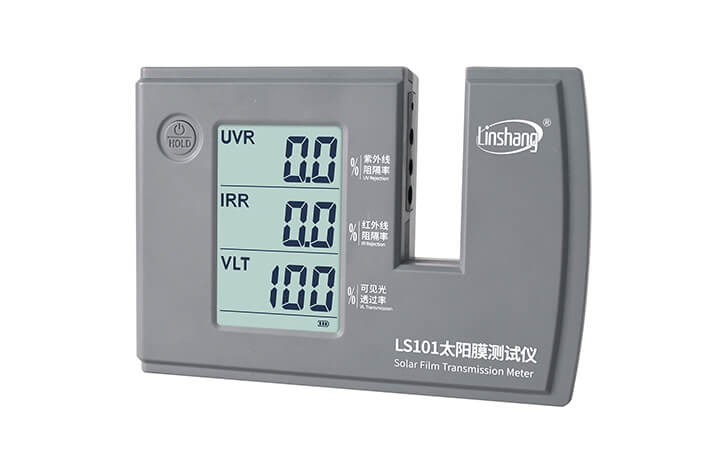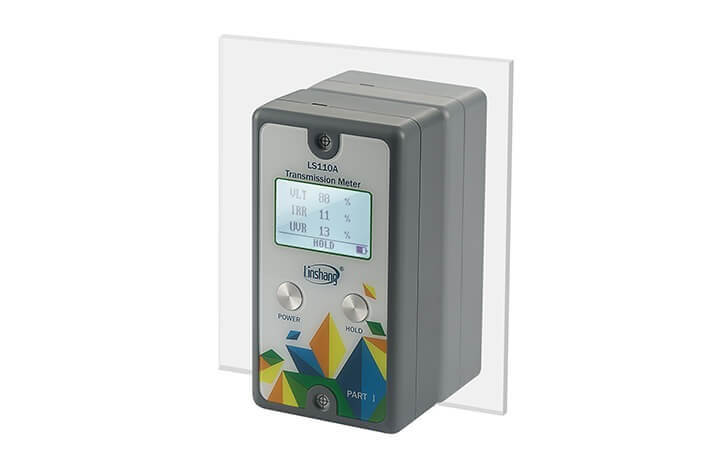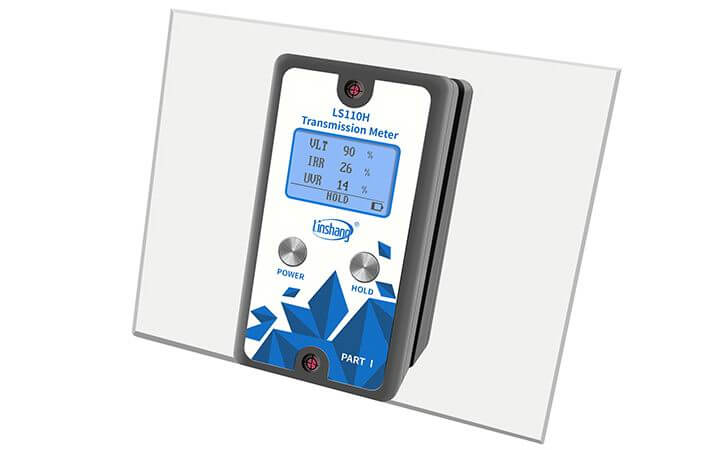As a leading window film transmission meter (window tint meter) manufacturer, Linshang Technology provides a variety of window film meters to measure transmission rate, rejection rate, SHGC for materials such as automotive film, thermal insulation film, architectural film, thermal insulation glass, etc. There are mainly portable solar film transmission meters LS160 series, LS162 series, LS163 series, desktop demonstration window tint meters LS101, LS180, LS181, L182, split transmission meters LS110A, LS110H. Whether you want to measure UV or IR rejection (940nm, 1400nm) or visible light transmittance, you can find a suitable window film meter here.
For more information about the selection of solar film tester, please read the article "Window Film Transmission Meter Selection and FAQ".
LS101 Solar Film Transmission Meter (2nd)
1. Infrared central wavelength at 940nm, suitable for testing absorbing film
2. Adopt parallel optical path design, which is suitable for testing thick materials
3. Large LCD display with backlight on
4. Test the UV rejection rate, infrared rejection rate and visible light transmittance
LS110A Split Transmission Meter
1.It is used for the transmittance testing of glass, plated film, organic materials, solar film and other translucent materials such as insulating glass, filmed glass, PMMA materials etc.
2.VL Peak wavelength:380-760nm
3.UV Peak wavelength:365nm
4.IR Peak wavelength:940nm
LS110H Split Transmission Meter
1.It is used for the transmittance testing of glass, plated film, organic materials, solar film and other translucent materials such as insulating glass, filmed glass, PMMA materials etc.
2.VL Peak wavelength:380-760nm
3.UV Peak wavelength:365nm
4.IR Peak wavelength:1400nm



